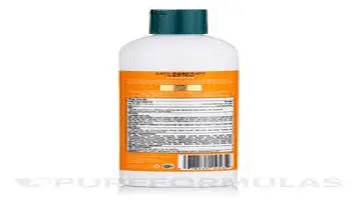The Critical Importance of High-Visibility Safety Gear
High-visibility safety gear is crucial for ensuring the safety of individuals working in environments where visibility is compromised, such as road construction sites, warehouses, and during nighttime activities. These garments, typically in bright fluorescent colors with reflective strips, enhance the wearer's visibility, making them easily noticeable to others, especially operators of vehicles and machinery. This significantly reduces the risk of accidents and injuries by alerting others to a person's presence in hazardous areas. In addition to enhancing safety, high-visibility gear is often a regulatory requirement in many industries, underscoring its importance in workplace safety protocols. By fostering a safer working environment, high-visibility safety gear contributes to operational efficiency and the well-being of workers.

In industries where heavy machinery, fast-moving vehicles, and complex work environments are commonplace, the importance of high-visibility safety gear cannot be overstated. High-visibility (hi-vis) safety gear, such as vests, jackets, trousers, and helmets, is designed to ensure that workers are easily seen, thereby significantly reducing the risk of accidents and injuries. This review delves into the critical reasons why hi-vis safety gear is indispensable in various sectors, and how its implementation can save lives, enhance efficiency, and foster a culture of safety.
Enhancing Worker Visibility: The Primary Objective
The fundamental purpose of high-visibility safety gear is to make workers stand out in their environment. This is particularly crucial in sectors like construction, road maintenance, warehousing, and emergency services, where the confluence of heavy machinery, moving vehicles, and active work zones creates a hazardous landscape. Hi-vis gear typically comes in bright colors such as fluorescent yellow, orange, or green, often incorporating reflective strips that ensure visibility both during the day and at night.
For instance, construction workers operating on a busy highway need to be visible to oncoming traffic from a considerable distance. The bright and reflective nature of hi-vis gear ensures that drivers can see workers well in advance, allowing them ample time to slow down or maneuver safely. Similarly, warehouse employees navigating forklift zones benefit from being easily distinguishable amidst stacks of inventory, reducing the risk of collisions.
Regulatory Compliance and Legal Mandates
In many countries, the use of high-visibility safety gear is not just recommended but mandated by law. Regulatory bodies such as the Occupational Safety and Health Administration (OSHA) in the United States and the Health and Safety Executive (HSE) in the United Kingdom have set forth stringent guidelines on the use of hi-vis gear in specific industries. Compliance with these regulations is not merely a legal obligation but a moral one, underscoring an organization's commitment to the safety and well-being of its employees.
Companies that fail to provide appropriate high-visibility safety gear can face hefty fines and legal repercussions. More importantly, they risk severe reputational damage and the potential loss of skilled labor. By adhering to these regulations and ensuring that workers are equipped with the right gear, employers can mitigate these risks and demonstrate their dedication to maintaining a safe work environment.
Reducing Accident Rates and Enhancing Safety
Statistics consistently show that the use of high-visibility safety gear directly correlates with a reduction in workplace accidents. According to the National Institute for Occupational Safety and Health (NIOSH), workers wearing hi-vis gear are significantly less likely to be involved in accidents compared to those who do not. This is particularly evident in sectors such as road construction, where the visibility of workers to drivers is paramount.
Moreover, high-visibility gear is crucial in low-light conditions or adverse weather. Rain, fog, and snow can significantly impair visibility, making it difficult for drivers and machinery operators to see workers. Hi-vis gear cuts through these visual barriers, ensuring that workers remain visible regardless of the environmental conditions. This not only prevents accidents but also allows work to continue safely and efficiently in a broader range of conditions.
Promoting a Culture of Safety
The implementation of high-visibility safety gear goes beyond mere compliance and accident prevention; it fosters a culture of safety within an organization. When workers see that their employer prioritizes their safety by providing high-quality hi-vis gear, it instills a sense of trust and responsibility. Employees are more likely to adhere to safety protocols and remain vigilant in their tasks, knowing that their well-being is a top priority.
Furthermore, the visibility of safety gear can serve as a constant reminder of the potential hazards present in the work environment. It encourages workers to remain alert and cautious, reducing complacency and promoting a proactive approach to safety.
Economic Benefits: A Long-Term Investment
While the initial cost of high-visibility safety gear may seem like an added expense, it is a prudent long-term investment. The reduction in accidents and injuries leads to fewer work stoppages, lower medical expenses, and reduced workers' compensation claims. Additionally, a safe work environment enhances employee morale and productivity, leading to better overall efficiency and profitability for the organization.
In conclusion, high-visibility safety gear is a critical component of workplace safety in various high-risk industries. Its ability to enhance visibility, ensure regulatory compliance, reduce accident rates, and promote a culture of safety makes it indispensable. By investing in high-quality hi-vis gear, organizations not only protect their most valuable asset—their employees—but also pave the way for a safer, more efficient, and legally compliant work environment.






